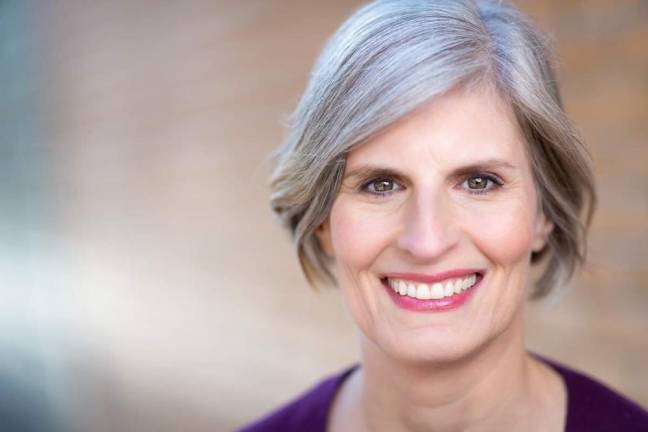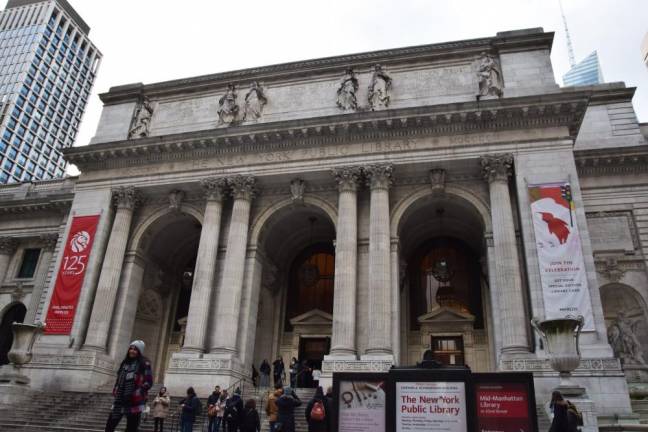'I Feel Like I'm Living These Stories'
Fascinated by tales from New York City's past, Beth Goffe leads walking tours and shares the sometimes scandalous details with tourists and natives alike


For a long time, Beth Goffe studied the history of Manhattan simply as a hobby. She read nonfiction compulsively and became fascinated by the New York that existed a century ago. When Goffe looks at the public library on 42nd Street, she sees the massive distributing reservoir that was once in its place. She sees neighborhoods that have long been erased by new development. But, even amidst all this change, Goffe will tell you that if you look close enough, you’ll be able to see the gems that remain.
That’s what she aims to do on the walking tours she now gives through her new company, Select Tours NYC. Goffe is guiding tourists and natives alike through Central Park and the Upper West Side to illuminate what the city used to be, and how it became what it is today.
What are your tours like?
I am doing a lot of Central Park tours. One of my favorites is the north end of the park, because people don't go up there that much. There's the mall and the famous spots that everybody wants to see as a tourist because you've seen them in movies and TV shows. I have to tell people that this is not the "Friends" fountain — because everybody says it is. And there's another tour that sort of kind of focused on the West Side.
What do you highlight on the west side?
There’s Seneca Village [an African-American community displaced in order to build Central Park in 1857]. It’s a pretty place, but there is a cost, right? Similarly, Lincoln Square area used to be called San Juan Hill. And it was all brownstones for blocks and it was a very working class neighborhood. It was immigrants and African-Americans. But Robert Moses [a longtime city official and prolific figure in urban development] said ‘Okay, we need an arts center here. We're going to just raze this whole area and put in an arts center.’ — which is fantastic. I used to come here with my parents to see the ballet and the opera and everything.
But thousands of people were displaced for this fantastic thing. As part of the redevelopment, they built Lincoln Towers. In “West Side Story,” when they're dancing in the street, all those buildings were already condemned and empty. As they're dancing, and they're filming, behind them the wrecking balls are coming in and taking down the buildings to be replaced by Lincoln towers. So it's good and it's bad.
Tell me about your scandal and murder walking tour.
One story is about William Randolph Hearst, of Hearst Publications, and actress Marion Davies, who was his girlfriend for decades. But he remained married to his wife and they lived on Riverside Drive. I thought, wow, that's kind of scandalous. There’s this really bizarre story about peaches and daddy ... right from the name you want to know more. He was a developer from the Upper West Side, and it's a really creepy and funny story, because he's like, an old guy falls in love with a 15 year old in the 1920s. It's just bizarre — and his buildings are still there.
How do you find these stories?
I like to accumulate stories. It just happens. The researching part is fun. I feel like I’m sort of living these stories as I’m writing them and I’m really beginning to know these people. Sometimes that’s good and sometimes that’s bad. Marion Davies is good. She's a criminally underrated actress. But it’s hard, right? Because she knows she she's sleeping with a married man and they move to California and leave the wife and five kids behind. And she's taking advantage of all the good stuff. But she's also really nice person and she cared for people in California and she built a hospital wing for children.
What have you seen change and become a part of history in the 30 years that you’ve live on the Upper West Side?
The flavor of the neighborhood has changed. When I moved in there were still a lot of mom and pop stores. There was a fair amount of gentrification that already happened in the West 70s by then, but still, there were hardware stores and sundry stores. There weren't chain stores. There weren't a thousand banks everywhere.
There was a great old building on the corner of Broadway and 72nd Street, on the southwest corner, where there's a Trader Joe's and Duane Reade now. That was an old gentleman's club. And not like a strip club gentleman’s club, but guys who go to smoke cigars. It had this rounded corner and it was brick. I used to take a yoga class in one of the rooms with the rounded corner and it was so cool. It was a really light, bright room. And they tore down and put Trader Joe’s in, which it's convenient. But it’s the character ... that’s the biggest thing.
Why is it important to you to tell these stories?
I think knowing about the past is really helpful. It gives you perspective. Like things that are happening now in the political world, if you don't know what happened in the past, you think, ‘Wow, this is all new.’ But, no, it's not. It's happened before and it's really not so great. If you know about that, then you can kind of go, ‘Oh, let’s see if we can do something about it.’ Tourists, they come here and they have a good time, but then maybe they actually take something home with them.
This interview has been edited and condensed. You can book a tour at selecttoursnyc.com